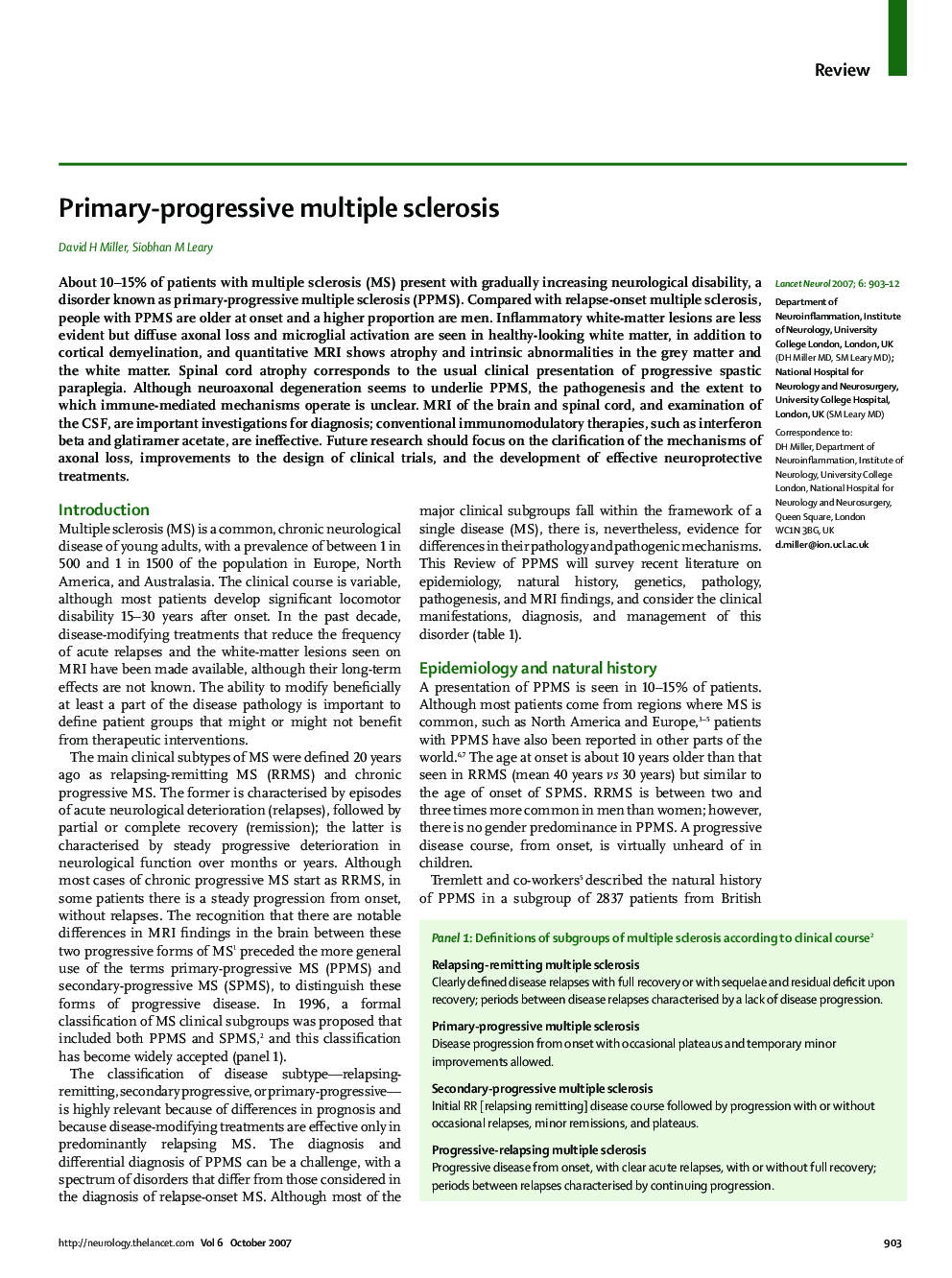| Article ID | Journal | Published Year | Pages | File Type |
|---|---|---|---|---|
| 3067471 | The Lancet Neurology | 2007 | 10 Pages |
SummaryAbout 10–15% of patients with multiple sclerosis (MS) present with gradually increasing neurological disability, a disorder known as primary-progressive multiple sclerosis (PPMS). Compared with relapse-onset multiple sclerosis, people with PPMS are older at onset and a higher proportion are men. Inflammatory white-matter lesions are less evident but diffuse axonal loss and microglial activation are seen in healthy-looking white matter, in addition to cortical demyelination, and quantitative MRI shows atrophy and intrinsic abnormalities in the grey matter and the white matter. Spinal cord atrophy corresponds to the usual clinical presentation of progressive spastic paraplegia. Although neuroaxonal degeneration seems to underlie PPMS, the pathogenesis and the extent to which immune-mediated mechanisms operate is unclear. MRI of the brain and spinal cord, and examination of the CSF, are important investigations for diagnosis; conventional immunomodulatory therapies, such as interferon beta and glatiramer acetate, are ineffective. Future research should focus on the clarification of the mechanisms of axonal loss, improvements to the design of clinical trials, and the development of effective neuroprotective treatments.
